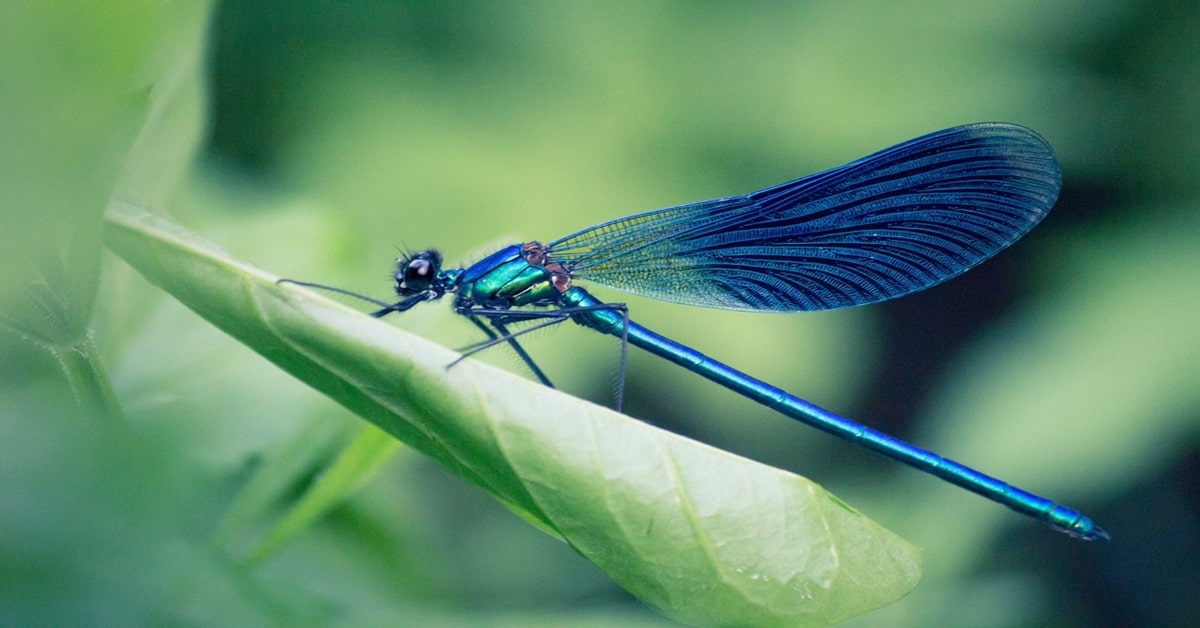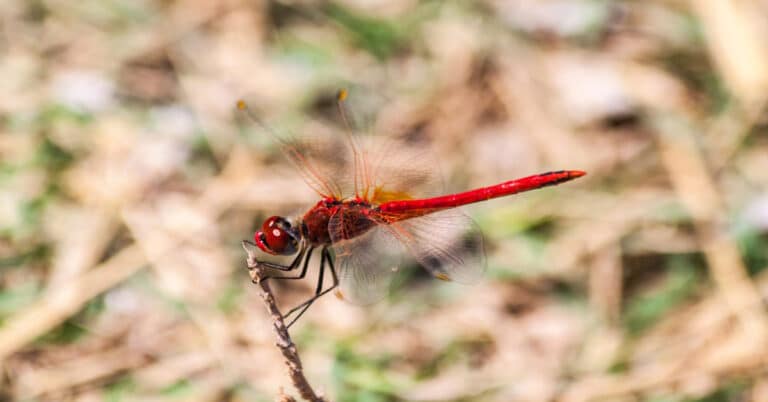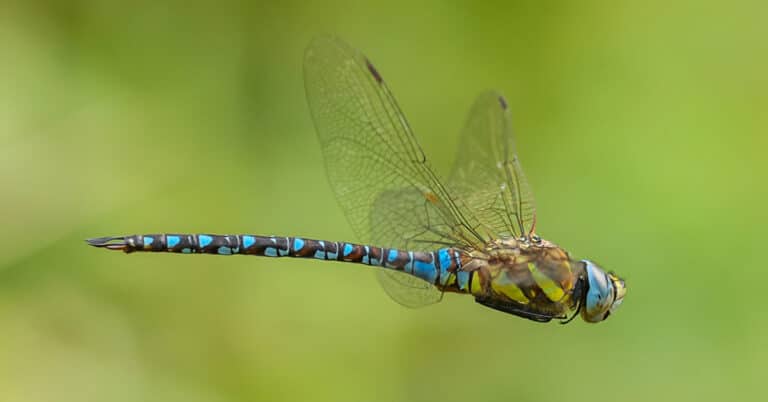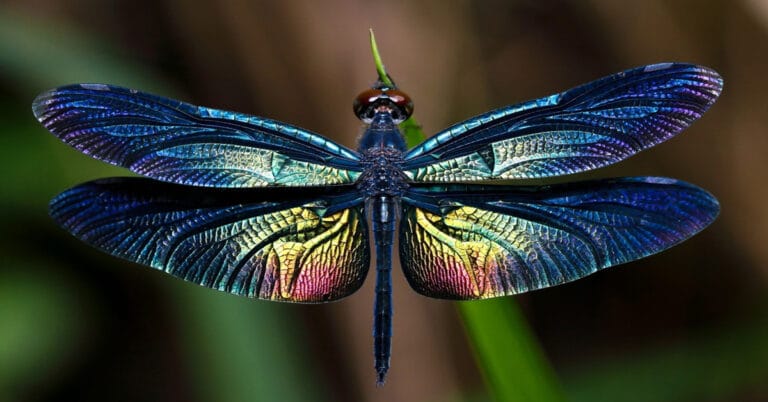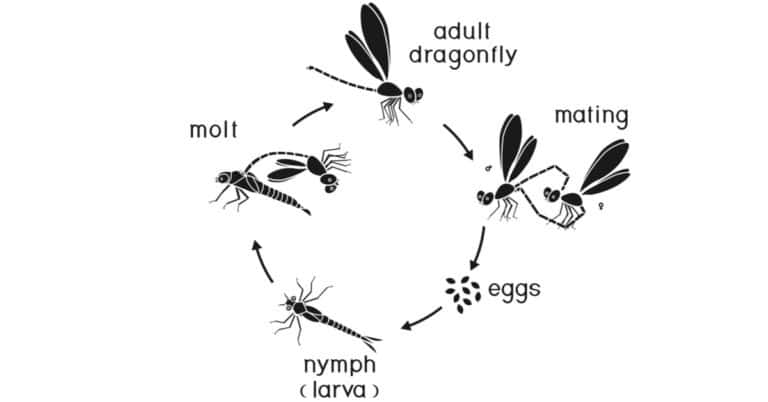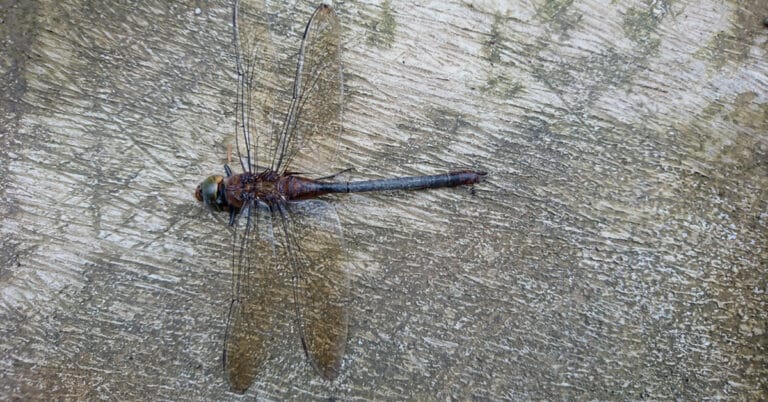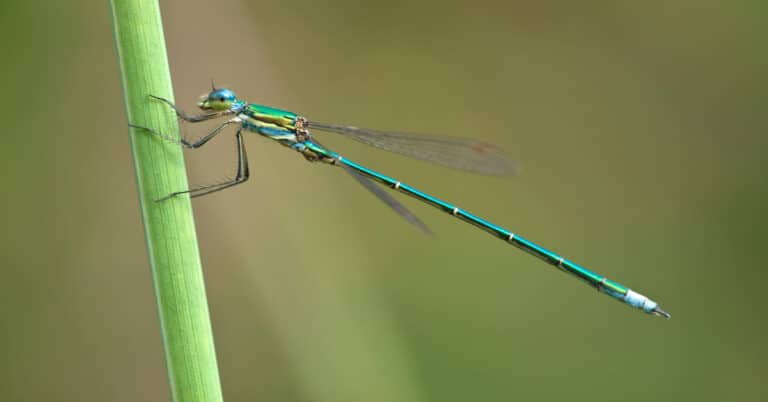Blue Dragonfly
Scientific Classification
| Kingdom: | Animalia |
| Phylum: | Arthropoda |
| Class: | Insecta |
| Order: | Odonata |
| Suborder: | Anisoptera |
| Family: | Libellulidae |
| Genus: | Pachydiplax |
| Species: | P. Longipennis |
| Binomial name: | Pachydiplax Longipennis |
The Blue Dasher, biologically known as Pachydiplax Longipennis, is an insect of the dragonfly species and belongs to the skimmer family. It is commonly found in the United States and is widely distributed across its regions. The actual meaning of the species name ‘Longipennis’ is “long wings”, but in reality, its wings are not much longer than those found in the other species. The body structure of the female Blue Dasher is peculiar, as its small abdomen makes the wings look longer than the others. This Blue Dasher is known as a Summer Species and is the only species present in the genus.
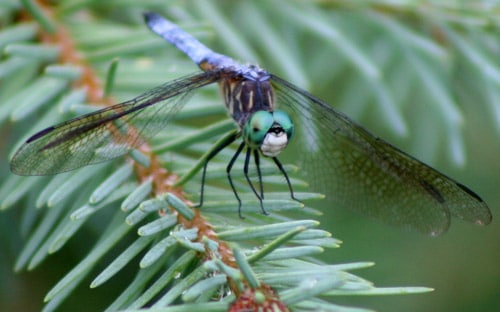
Description
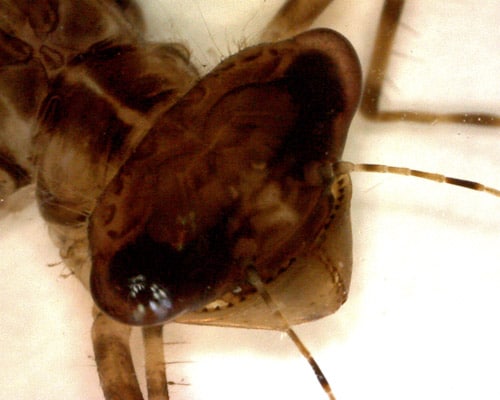
Naiad
The Blue Dasher Naiad or larva is comparatively smaller than the other species, with a length ranging from 18 to 21 mm. The color combination of this dragonfly is unique, with brownish shade in the above part and bright green below. It possesses a single, but rear-facing spine on every side of the eighth and ninth abdominal segments. The one in the ninth segment is more noticeable than the others, due to its length.
Adult
The adult Blue Dasher is generally moderate in size, and attains a length of about around 35 to 45 mm. Its abdomen portion is fairly broad. The juvenile male Blue Dasher and the adult female Blue Dasher have a greenish shade on their thorax and face, and their abdomen displays a brownish-black shade along with two parallel pale yellow to green lines. They have clear wings but sometimes, a shade of brownish-yellow can be seen at the bottom part, especially on the wings at the hind part. Adult males are seen with bluish-white P, developed on the back part of the abdomen, and the ones from the western regions has this Pruinescence on the thorax, which they display to other male Blue Dasher as a sign of threat at the time of defending territories in the water edges. The Female Blue Dasher also turns into a blue shade, but at a very slow rate, compared to the males.
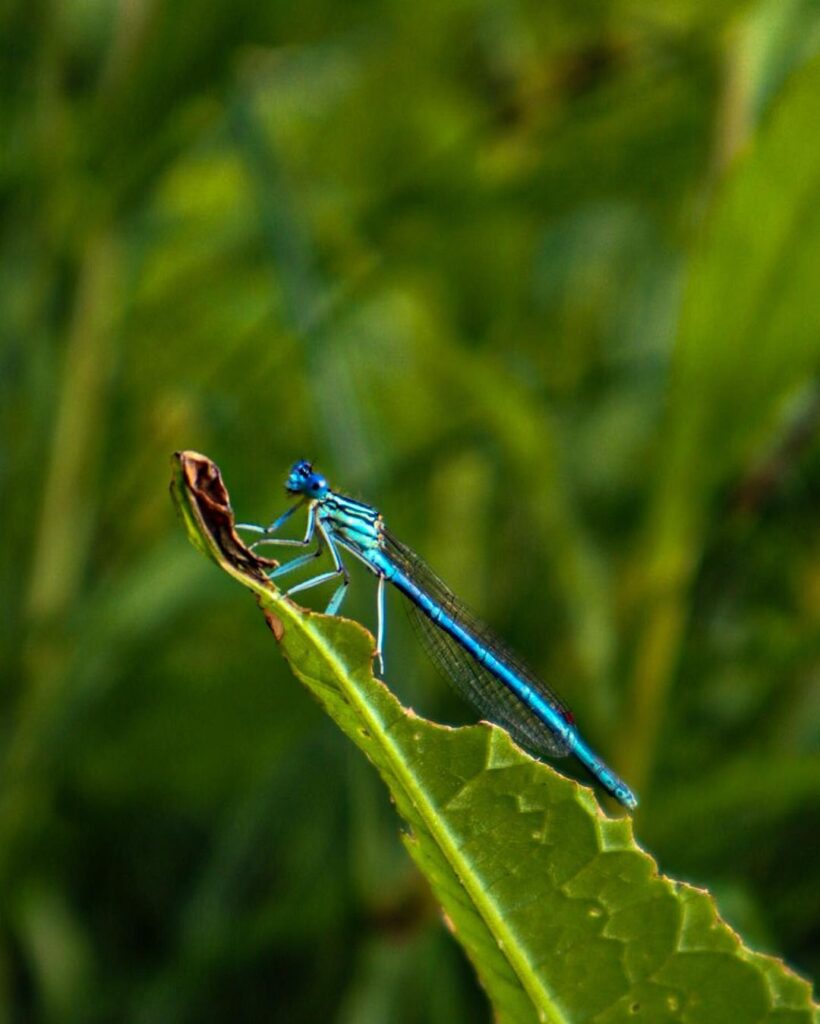
Life Cycle
Like the other dragonflies, this species is also aquatic in its early days. It can also thrive in a low water quality habitat, which means the oxygen content in the water will be less. The lifespan of this creature extends the whole summer and the next three seasons. Eggs are laid on the vegetation in the water body. The Naiada stage occurs after the egg hatches, and they feed on the insects found in the water. Later, as it develops and reaches maturity, it slowly comes out of the water surface and climbs on some vegetation. By this time, its respiratory organs start to inhale air, and they puff their body. This process continues till their exoskeleton breaks, and the adult Blue Dasher evolves from that crack. Mostly the adult Blue Dashers evolve during the night time. The flying time of the adult Blue Dasher is from the end of June to the month of September.
Range
The Blue Dasher is widely spread across the United States, but can also be found in Canada and Mexico. This dragonfly cannot be found in the Rocky Mountain areas and in the Dakotas. The range extends from British Columbia’s south eastern part to Ontario, and other US places include Pacific Northwest (Washington State, California, Oregon and Okanagan Valley). It is also seen in the coastal region of the South Coast (Burnaby, Fraser Estuary and Fraser Lowl) and found in the Gulf Islands of the southern part (Galiano, Salt spring and islands of Saturna). It also inhabits the Bahamas, Idaho and lower elevation regions, generally below 3000 feet.
Habitat
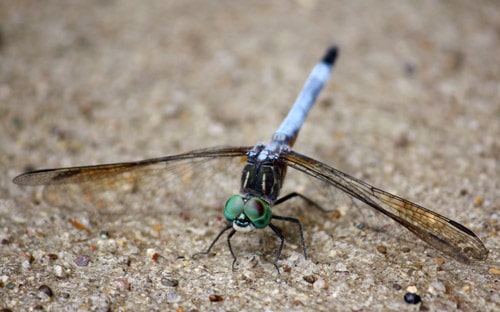
They are mainly found in ponds, marshes, lakes and bogs. They prefer wetland, and can be seen almost anywhere with slow moving water. The larvae form can tolerate the wet places, and can also thrive in poor quality water habitat. This is helpful to the biologists of Florida, who assume that the water body in which this insect inhabits will have low quality water or less oxygen containing water.
Reproduction
Normally, the male is often seen near the water edges, saving its territory lines, whereas the females are seen near the vegetation. The female Blue Dasher approaches water only during the period of laying eggs. Before mating, the male dragonfly produces the sperm in the end part of his abdomen, and then brings it to the front part, behind the thorax. The dragonfly has a very unique and different courtship process. The male dragonfly holds the female by the neck to induce her for mating. The mating process occurs in the air, and the pair flies in the surrounding. The process also continues after landing on any surface. When they perch, both the male and female stick their abdomen upright in the air. During the mating process, both close their wings. Female Blue Dasher Oviposits by approaching close to the water surface, and then by dipping its abdomen in the water. Most of the male Blue Dashers stand guard until the fertilization of eggs to avoid any other male Blue Dasher attacking the female dragonfly and the eggs.
Food
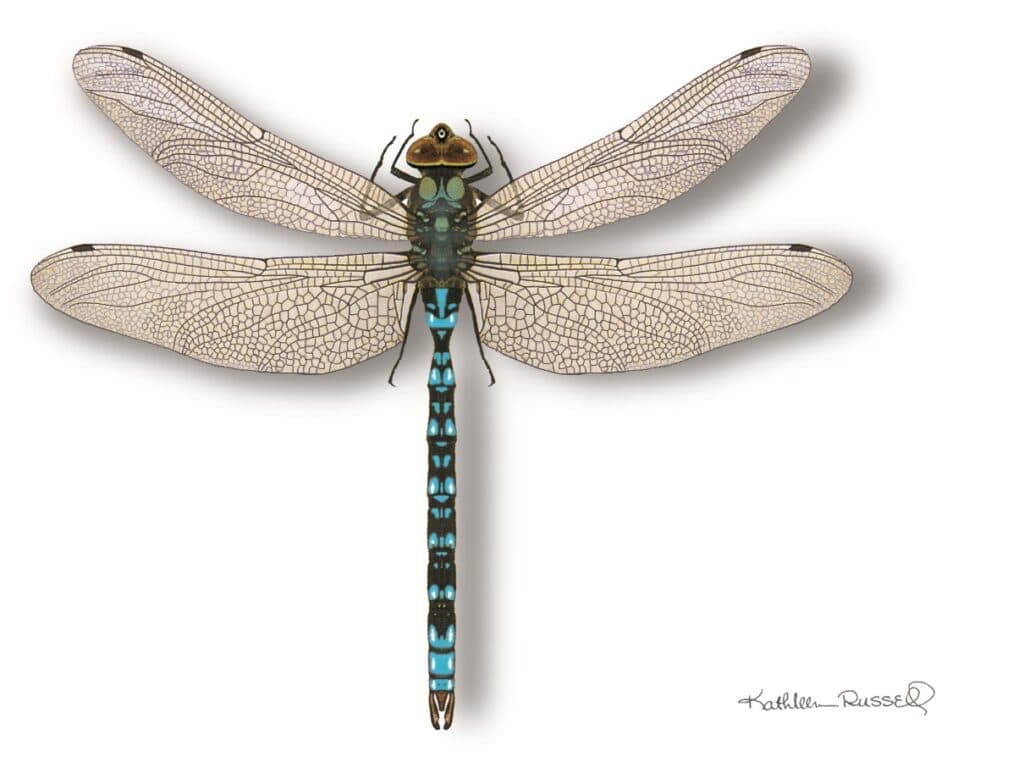
You can call this creature as an eating machine, because it consumes food continuously and in a large quantity. This dragonfly is carnivorous in nature, and is known as a brutal predator. It often carries out its hunting from perches on rocks and twigs. Similarly, it will feed on anything that passes by, and that can be captured by its mandibles. The Blue Dasher’s mandible rests under its body, when sitting idle, but, immediately thrusts out when its eyes fall on a prey. But, it prefers the mosquito larvae the most. It also eats larvae of aquatic fly and mayfly, tadpoles, small fish and shrimps found in the freshwater. The preferences change, when it matures into an adult dragonfly. This carnivorous insect eats most of the soft-bodied insects like flies, cicadas, moths, butterflies, flying ants, mayflies, and termites. They are very fast in catching their prey, as well as, escaping from the predators due to its compound eyes. Their eyes are composed of thousand of smaller eyes, which give them view from all the directions. Along with that, they have a unique style to catch their prey by creating a basket-like position with the legs to hold the prey. Then, they swoop and bite the prey to keep it in place, and often feed on it even when they are flying.
Predators
The Blue Dasher dragonfly is the food for numerous animals like birds, frogs and lizards. The birds snatch their wings and consume the fleshy body part. But with effective compound eyes, it can keep away from the predators and escape smoothly. It flies a minimum speed of 18 to 35 mph.

Having discovered a fondness for insects while pursuing her degree in Biology, Randi Jones was quite bugged to know that people usually dismissed these little creatures as “creepy-crawlies”.

